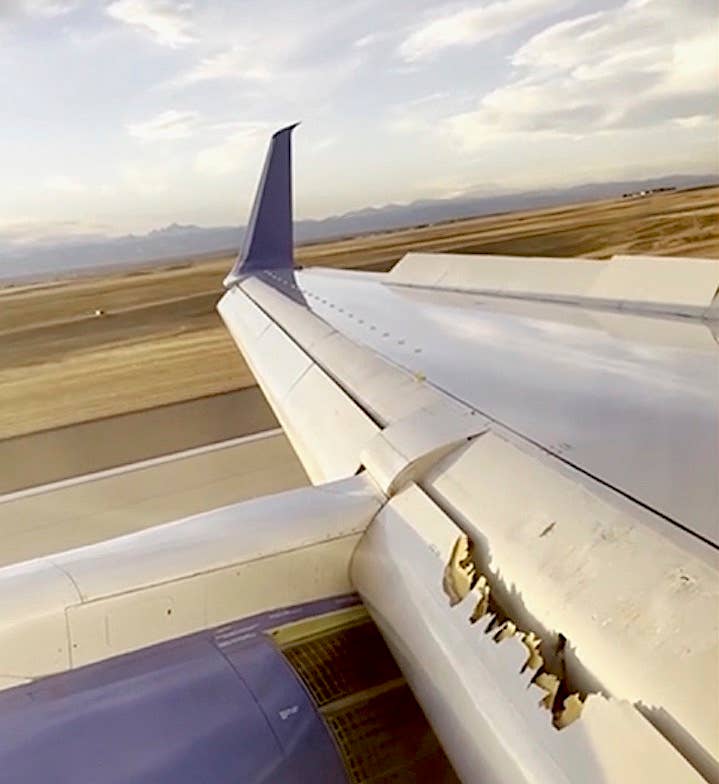Veteran Boeing 757-200 Makes Successful Emergency Diversion
Details are still sketchy on a United Airlines Boeing 757-200 flight that diverted for an emergency landing earlier this week after it suffered damage to an inboard leading-edge slat on…

Screenshot from passenger video.
Details are still sketchy on a United Airlines Boeing 757-200 flight that diverted for an emergency landing earlier this week after it suffered damage to an inboard leading-edge slat on its right wing. Flight 354 was bound from San Francisco to Boston but landed safely at Denver International Airport. The 165 passengers deplaned at Denver and later boarded another aircraft to complete the journey.
A passenger shot video of the damage as the aircraft landed, showing damage to the top portion of the leading-edge slat. His video was later broadcast on Boston 25 News. The passenger told the news station that, as he was leaving the arrival gate, he saw a United employee with what he described as a “bird-strike form.”
It was unclear how old the Boeing 757-200 is. The model was introduced into service with Eastern Airlines in January 1981. It remained in production until 2004 and continues to serve United Airlines and Delta Air Lines, as well as UPS and FedEx in cargo configuration. Boeing has delivered 1,050 of the 757s over that time span.






